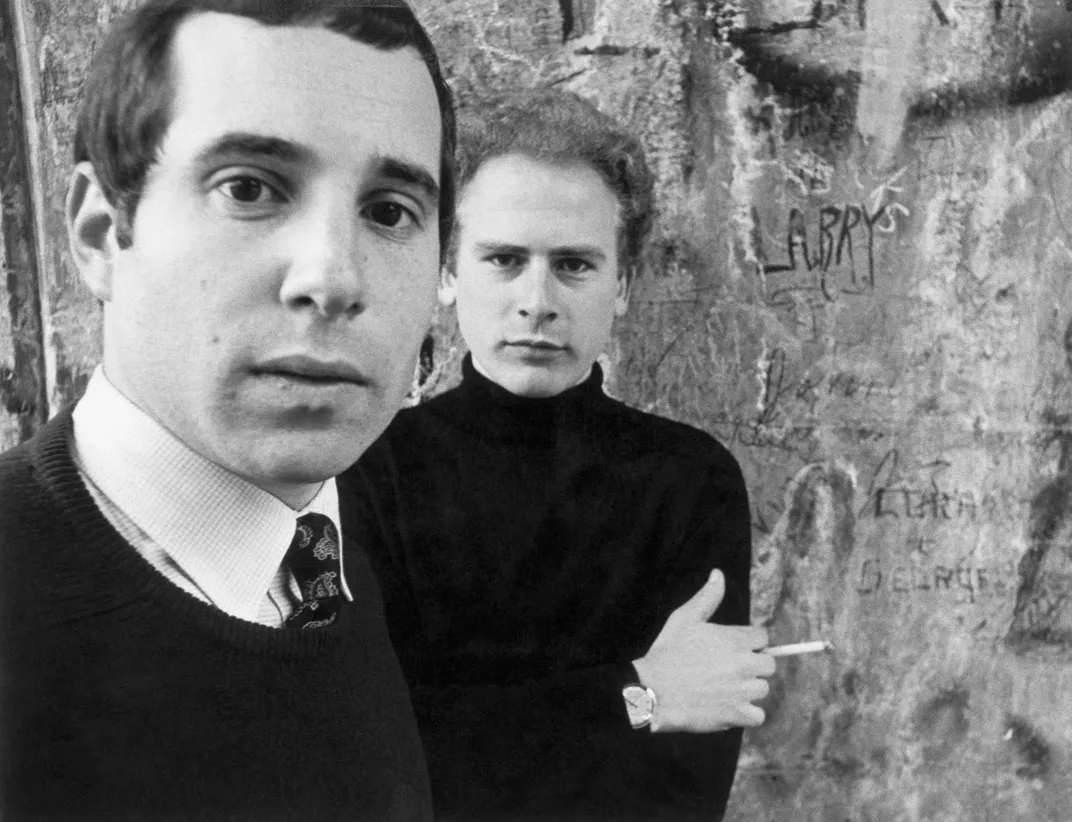How “The Sound of Silence” Became a Surprise Hit
The Simon and Garfunkel song catapulted the duo to stardom
It’s been 50 years since Simon & Garfunkel’s “The Sound of Silence” topped Billboard magazine’s pop singles chart. But it’s been almost 52 years since the song was first recorded. What happened in that interval made all the difference.
If Columbia Records producer Tom Wilson hadn’t taken the initiative, without the singers’ knowledge, to dub a rock rhythm section over their folk rendition, the song never would have become a cultural touchstone—a generation’s shorthand for alienation—nor the duo a going concern, let alone an exemplar of early folk-rock music.
The two, friends from boyhood in New York City, had had a modest hit single (“Hey, Schoolgirl”) as Tom & Jerry in 1957. They parted, then reunited as Kane & Garr and played a few club dates. Garfunkel was studying at Columbia University in the winter of 1963-64 when Simon got in touch: “Paul only had about five songs at this time,” Garfunkel recalls, “but he called and said, ‘Artie, I just wrote my best song.’ He drove over from Queens and played it for me in the kitchen amongst the roaches.”
It reminded Garfunkel of “The Three Bells (The Jimmy Brown Song)” by the Tokens. “That was OK,” he says. “Everything was based on something else in those days. But Paul’s version had a wonderful extension to the melody...and of course it had all that brilliant urban imagery.” Simon, like Bob Dylan before him, was bringing a literary sensibility to pop songwriting, drawing not on the rural folk music of Woody Guthrie, but on urban doo-wop—whose street-corner harmonies Garfunkel’s angelic tenor made possible.
The song won them a contract from Columbia Records, and in March 1964, the renamed Simon & Garfunkel recorded 12 songs, including five Simon originals (with one credited to his pseudonym Paul Kane). The cover photo for the resulting album, Wednesday Morning, 3 AM, featured the duo on a Manhattan subway platform, a nod to a line from “The Sound of Silence”: “The words of the prophets are written on the subway walls.”
And in that year of Beatlemania, nobody noticed. So Simon moved to England and recorded The Paul Simon Songbook, a U.K.-only album. Garfunkel joined him in the summer of 1965 and they played a few gigs.

Meanwhile, disc jockeys in Florida and Boston started airing “The Sound of Silence.” And then Tom Wilson—who had overseen Dylan’s first electric sessions and would have a legendary career before he died in 1978—got involved. Enlisting guitarist Al Gorgoni and drummer Bobby Gregg, both of whom had played on Dylan’s Bringing It All Back Home, Wilson overdubbed a jangly, amplified rhythm section from the second verse onward.
The record company invited Garfunkel to hear the new version in its New York City studio. “I never would have said, I hate it, you can’t use it, because we didn’t have that kind of artistic control in our contract,” he recalls. If they did, he says, “I would have made sure the drums and bass were in sync with the voices at the end of the fourth verse ...but I was interested in having a hit record.”
He had one. The new “Sound of Silence” was released in October and hit number one in early January 1966. The two hastily recorded the album Sounds of Silence and began to perform all over North America. They played the song at nearly every Simon & Garfunkel show till they broke up, in 1970. More than 60 covers have followed, including James Blake’s chill electronica rendering this past fall.
“I still like to sing ‘The Sound of Silence,’” Simon tells Smithsonian, though the 50-year anniversary is “not an easy number to grasp.” But even after all these years, he says, “I rate it as one of the best songs I’ve written.”
/https://tf-cmsv2-smithsonianmag-media.s3.amazonaws.com/accounts/headshot/geoff-vancouver-bio-lightened.jpg)


/https://tf-cmsv2-smithsonianmag-media.s3.amazonaws.com/accounts/headshot/geoff-vancouver-bio-lightened.jpg)